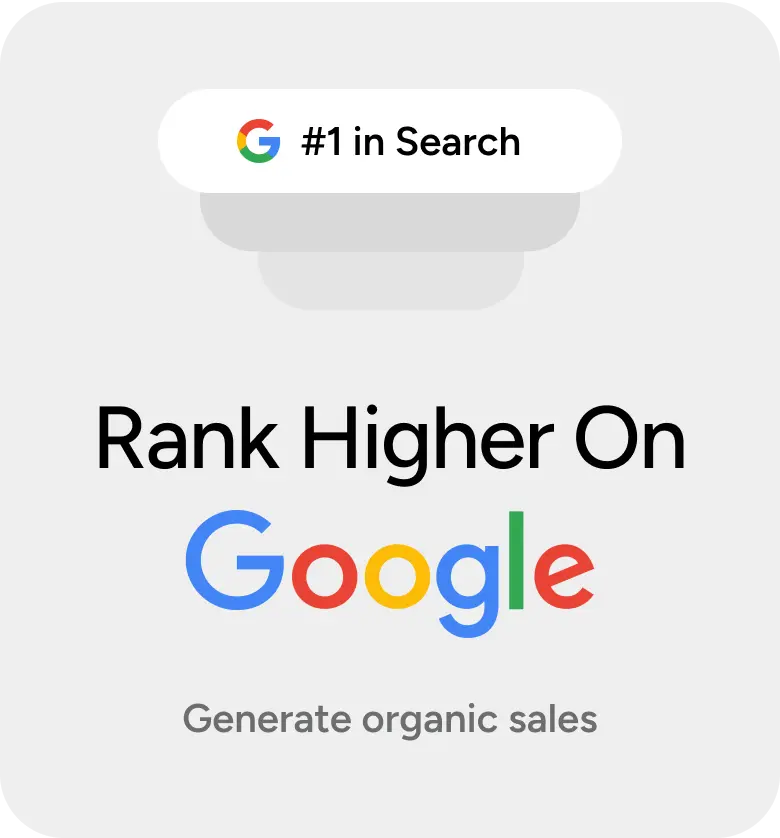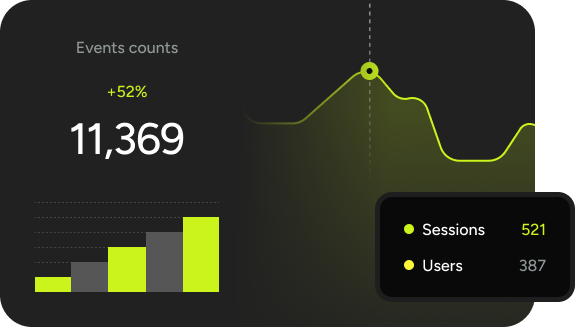B2B SaaS SEO Agency That Maximizes Your MRR
We help B2B SaaS companies speed up customer acquisition with our detailed SEO strategy. Get a free digital marketing strategy call today.
More Than 70 Industry Leaders Trust Us














































SaaS SEO Strategy
Our B2B SaaS SEO agency helps you get more qualified leads

Truth:
We inspect your competitor’s marketing strategy to identify content gaps, local SEO opportunities, and more. Our analysis informs a plan designed not just to match but to surpass your competitors. By staying ahead of market trends and competitor tactics, we ensure you’re not just part of the conversation — you lead it.
Our approach:
Our SEO experts drive pipeline growth and MRR with an ROI-positive SaaS SEO strategy. We focus on bottom-funnel search engines and organic traffic, so you can:
- Hit trial & demo targets with ease
- Generate SQLs at a cost that makes sense
- Win the right customers with the highest LTVs
How?
We find the best bottom funnel keywords with high transactional intent for your SaaS brand. Then we craft our result-driven SaaS SEO strategy with keyword research
Your Results:
Spend less time and money on content marketing campaigns. We will build and execute your SaaS SEO strategy while you get qualified leads, drive pipeline and grow revenue.
Our SaaS Clients Have Been
Featured In















B2B SaaS SEO Services
We take care of everything, from in-depth research of your target audience and content creation to B2B link building and technical SEO. Here is a breakdown of the SEO services we offer to SaaS companies:
Keyword Research
To create the most effective bottom-of-the-funnel keyword strategy, we start with in-depth research of your target audience, SaaS competitors, and related keywords.
What We Do:
- In-depth research of your target audience and the market to create your ICP
- B2B buyer journey map
- Competitor research with a focus on content gaps, trending keywords and potential opportunities
What You’ll Get:
- A comprehensive keyword list organized by funnel stage, difficulty, and search volume
- A new SEO strategy with ideas for content creation and optimization
- Regular content calendar optimization based on performance
Content Creation
We create content following our approved content marketing strategy.
What We Do:
- Our B2B tech writers and SEO editors create the best structure for each content page
- Dedicate 1–3 in-house SaaS SEO content writers to your project
- Create high-quality SEO-optimized content for your website with proper positioning and messaging
What You’ll Get:
- Ready to publish content on time and edits according to your suggestions
- Direct publishing on your CMS
- An increase in organic pages, keywords, traffic, sign-ups, MQLs and inbound backlinks.
Link Building & Off Page SEO
For a healthy backlink profile, we analyze your current links and remove toxic ones. The next step in our SaaS link-building process is running an SEO campaign to build high-quality authority links from reputable domains to your money pages.
What We Do:
- In-depth backlink profile analysis and removal of toxic and low-quality links
- Competitor backlink analysis for finding sources and opportunities
- Link opportunities from our SaaS database of 5,000 + reputable domains
- Third-party website outreach for proper link insertion
- Content placement on niche websites with a high authority
What You’ll Get:
- A healthy backlink profile
- New high DR backlinks to your money pages
- Increase in ratings and authority
On Page SEO
We crawl your entire website and optimize every on-page element, from metadata to page buttons.
What We Do:
- Write relevant metadata (titles and descriptions) for every page.
- Optimize headings on existing pages according to SEO practices
- Optimize URLs according to best Google practices
- Implement a proper internal linking strategy for SEO juice
- Implement schema markups throughout the website
What You’ll Get:
- 100% on-page optimized website according to the best Google and SEO practices
- Increase in organic visibility on Google
Technical SEO
We conduct regular technical SEO audits and resolve any issues your website has.
What We Do:
- Set up and monitor Google Search Console, Google Analytics and Google Tag Manager
- Tracking and event set-up for conversions
- Cookies and pixel placement on landing pages
- Site speed optimization
- Core Dev Vitals optimization
- Website mobile optimization
- XML sitemap and Robots.txt implementation
What You’ll Get:
- Audit reports on website crawlability and indexability
- Implementation of recommendations
Conversion Rate Optimization
We help you convert your website visitors into MQLs by implementing effective CRO activities.
What We Do:
- Analyze high-traffic website pages that don’t have a good conversion rate
- Recommend and implement the best conversion rate optimization tips for each quarter
What You’ll Get:
- A high-converting SaaS marketing funnel
- Conversion optimized pages
Maximize Your SaaS SEO Efforts
Drive New Leads
at Low CACs
With a detailed SaaS SEO growth strategy, you will constantly drive high-quality, ready-to-buy leads organically.
Dominate Search & Steal Competitor Traffic
Appear as the #1 solution to your relevant customers, no matter what they search. Stand out from your SaaS competitors with authority and expertise.
Optimize Efficiently
A full SEO service will maximize your SEO efforts and lay the foundation for bringing leads.
How We Track Results & KPIs
We are 100% transparent about results and KPIs. With complete 24/7 visibility, real-time dashboards and monthly GA, GSC and CRM reports, you clearly understand your SEO efforts.

Business Metrics
- New leads: The number of people that acted on your CTA
- New customers: The number of new customers
- MRR: Revenue from SEO
- LTV: The number of pages that acquired LTV
SEO Metrics
- Impressions: The number of times you appear in search results
- Keywords: The number of relevant keywords you rank for and their positions
- Clicks: The number of page visitors
- On-page engagement and bounce rate: The number of visitors that stay or leave your page
How We Communicate
We are a part of your team. We communicate through:
- Slack: Instant communication and live updates
- Calls: Regular check-ins and strategy alignment
- Dashboards: Real-time performance updates
- Reports: Detailed monthly report on tasks and results
Testimonials
Types of SEO Content We Create
We create and optimize content aligned with our bottom-funnel SaaS SEO strategy. These are the essential content types for all SaaS companies.
- Blog Posts
- How-To Guides
- Checklists
- Product Pages
- Solution Pages
- Features Pages
- Use Cases Pages
- Product Reviews
- Comparison Pages
- Alternatives-To Pages
- Homepage
- Templates
- Glossary Pages
- Pillar and Cluster Pages
Our SEO SaaS Clients Case Studies
We’ve worked with the top SaaS companies across multiple industries including: martech, sales tech, productivity, HR, billing, developer software, fintech, procurement, CRM, customer service, Amazon, eCommerce, AI and more.
FAQ
A SaaS SEO agency offers digital marketing services focusing on search engine optimization (SEO) to software-as-a-service (SaaS) brands. Services usually include keyword research, content strategy, link building, On-page and Off-page optimization, and technical audits. With a comprehensive strategy that includes all of these services, SaaS companies can expect measurable results such as increased MRR, clicks, traffic, and qualified leads.
If you want your website to generate leads while you sleep and experts do the heavy lifting – you need a SaaS SEO agency. If you want to outsource SaaS, our team of growth strategists, in-house writers, developers take care of your website and help you reach your target audience faster.
The best SEO strategy for SaaS businesses is the “bottom of the funnel”. By focusing on keywords with high buyer intent, SaaS brands get high quality leads, ready to use their product. To maximize your SEO investment, you need to focus on marketing your product to the buyers that already know the type of solution they need.
Yes, keyword research is important for a SaaS business because it sets the foundation for a successful content marketing strategy. By balancing intent, search volume and difficulty, NUOPTIMA makes sure you are ranking for relevant keywords that your audience uses.
Yes, link building is an important part of the SEO strategy for SaaS brands because it is one of the top ranking factors for Google. Relevant and healthy backlinks signal to Google that your page has high authority. SaaS SEO agencies can speed up the process of naturally acquiring good backlinks and removing toxic ones.
To pick the best SaaS SEO agency, check that the services they offer, communication, reports, and pricing are aligned with your goals and budget. Check their testimonials and processes to ensure your SEO efforts bring in leads and ROI.
To measure SaaS SEO results, you should analyze the effectiveness of your SEO efforts before and after implementation. Keep in mind that SEO isn’t a sprint but a marathon”, so not all results occur instantly. The metrics important for SaaS founders are: MRR, new leads, customers, clicks, traffic, rankings, and page/website authority. A SaaS SEO agency should provide monthly reports on progress, with a steady increase.
Start Driving
Revenue Growth Today




